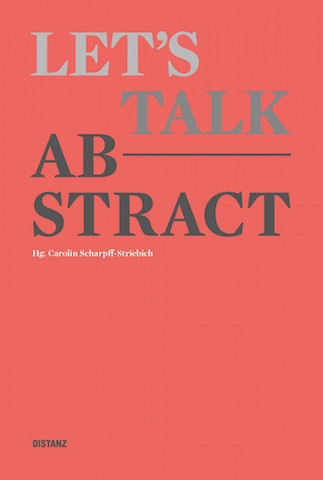Abstraction is probably one of the most discussed subjects of twentieth-century art history; as such, any new publication on the subject either risks being a touch anachronistic or sets itself the difficult task of finding new ground. That hasn’t deterred Carolin Scharpff-Striebich, director of the Scharpff Collection, in Berlin. For this volume, she has invited 16 art historians, collection managers, critics, curators and artist-estate managers to select an abstract painting as a conversation piece.
At their best, the selected pictures (which date from 1955 to 2016) and the conversations they generate open windows through which the reader can view the larger context from which these works emerged The Guggenheim’s Richard Armstrong, for instance, describes Al Held’s transition from overtly illusionistic compositions to more complex studies of perspective, and his relative isolation once he didn’t fit Clement Greenberg’s logical evolution of abstraction. Elsewhere, collector Pamela Joyner uses a canvas by Jack Whitten to locate a generation of African-American abstract painters emerging under the mentorship of Norman Lewis, some of whom considered abstraction a way of making art without specific reference to identity politics.
Too often, though, the conversations become frustrating descriptive discussions about qualities that are lost in the flat reproductions included here, an experience only exacerbated by the hyperbolic remarks served by the interviewer, as she transforms herself into abstraction’s high priest (one painting is ‘a blessing’, others are ‘incredibly open’, or ‘an incredible provocation’). And here lies the fundamental problem of this book: Scharpff-Striebich struggles to offer a counterpoint to the interviewees’ readings of the works, giving the whole thing the feel of a series of random and insider speed dates with artworlders, who, she tells us in her foreword, she’s friends with or wants to meet. As if to ram the point home, the interviews are organised according to the interviewees’ rather than the artists’ names. Art really does become abstracted in the middle of this social whirl.
From the March 2019 issue of ArtReview
